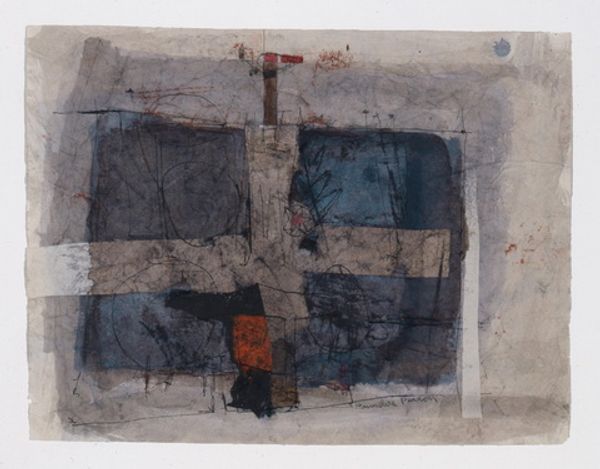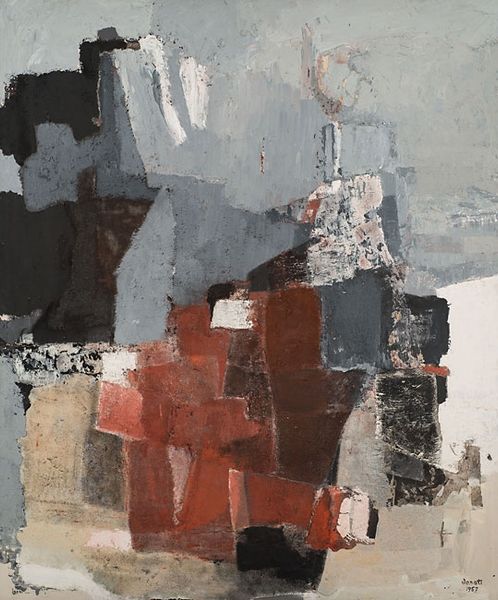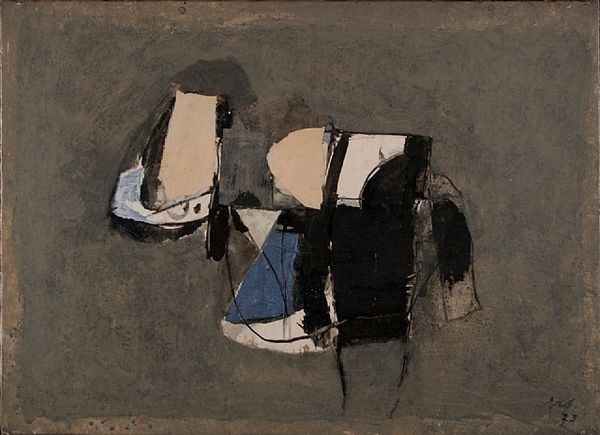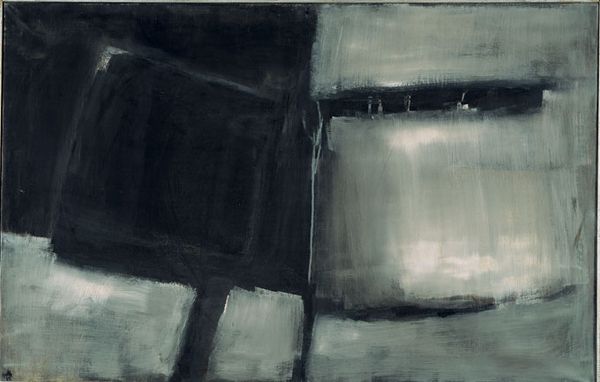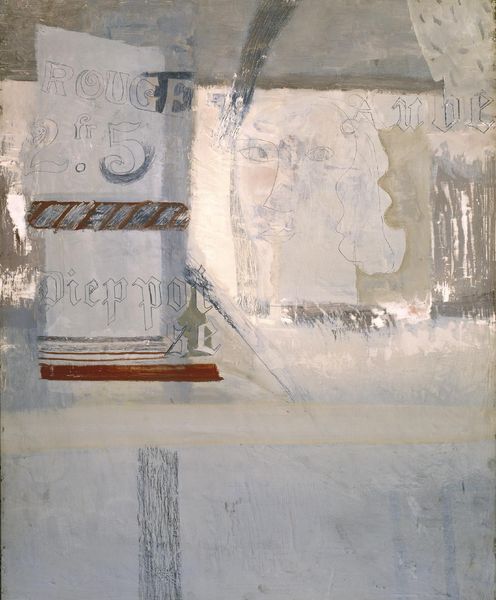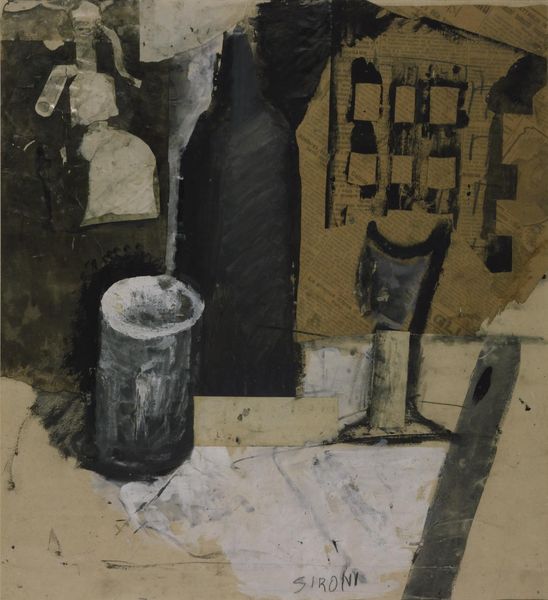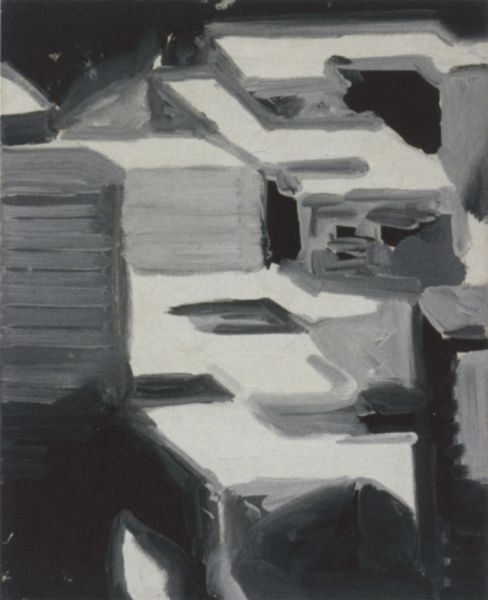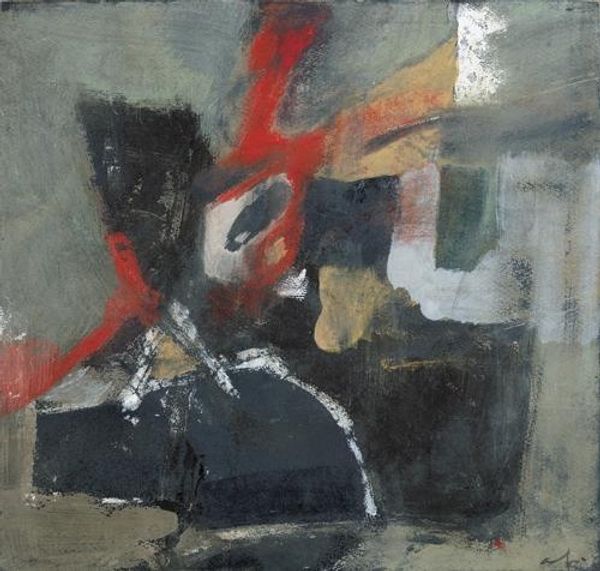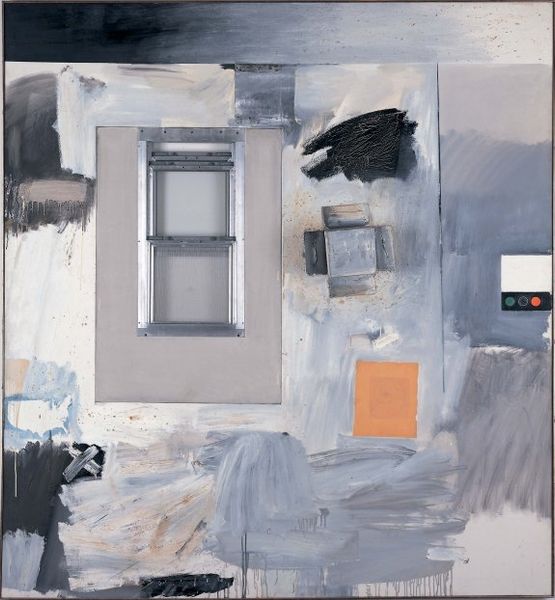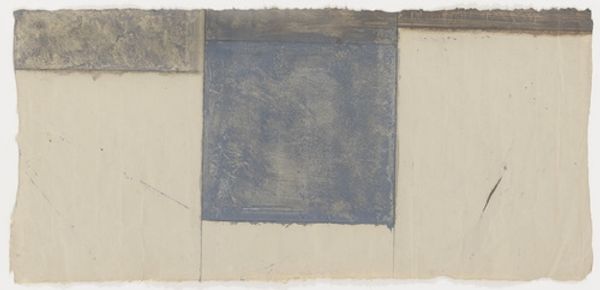
drawing, mixed-media, painting, watercolor
#
drawing
#
mixed-media
#
water colours
#
painting
#
sculpture
#
painted
#
watercolor
#
geometric
#
abstraction
#
watercolour bleed
#
mixed media
Dimensions: overall (deckled): 12.8 x 13.2 cm (5 1/16 x 5 3/16 in.)
Copyright: National Gallery of Art: CC0 1.0
Editor: This is Tim Casey’s "W-7," made in 1987, it’s a mixed-media piece incorporating painting, drawing and watercolor elements. I’m immediately struck by its subdued palette and ambiguous form. What socio-political or cultural forces do you think shaped the artist’s choices in this work? Curator: Given its creation in 1987, near the end of the Cold War, it's compelling to consider the era's anxieties around industrialization and abstraction’s depoliticization in the art world. Do you find echoes of industrial forms here, perhaps mediated by a sense of decay or uncertainty, which relates to social and cultural movements? Editor: I can see the potential connection to industrial forms; however, the muted tones and watery textures feel almost like a rejection of hard-edged industrial aesthetics. Was there perhaps an institutional rejection of overtly political art in favor of abstraction that may be happening at the time? Curator: Precisely. Consider the dominance of formalism, particularly championed by figures like Clement Greenberg, which heavily influenced art criticism and the museum world at that time. Could the artist be subtly commenting on that depoliticization by embedding faint suggestions of industry within an abstracted composition? Look at how its subdued and desaturated colours further support its commentary on industry by drawing away from its true appeal and strength. Editor: That makes sense. It’s as if the industrial is there, but faded, like a memory. I hadn't considered the role of formalist criticism in shaping even seemingly apolitical art. Curator: It highlights how even abstract work can be deeply embedded in a socio-political context, speaking to, or even pushing against the existing structures and tastes of the time, whether deliberately or subconsciously. It seems Casey also worked in sculpture – would you say there is a cross over with similar thematic intentions? Editor: It’s interesting how understanding the historical forces at play can really deepen one's interpretation of something that at first glance appeared quite simple and purely abstract. I'll definitely think about the public role of art when I next view such artwork. Thank you. Curator: Indeed, exploring the public role illuminates the complex ways imagery carries cultural meaning. It’s a dialogue to which each artwork contributes.
Comments
No comments
Be the first to comment and join the conversation on the ultimate creative platform.
